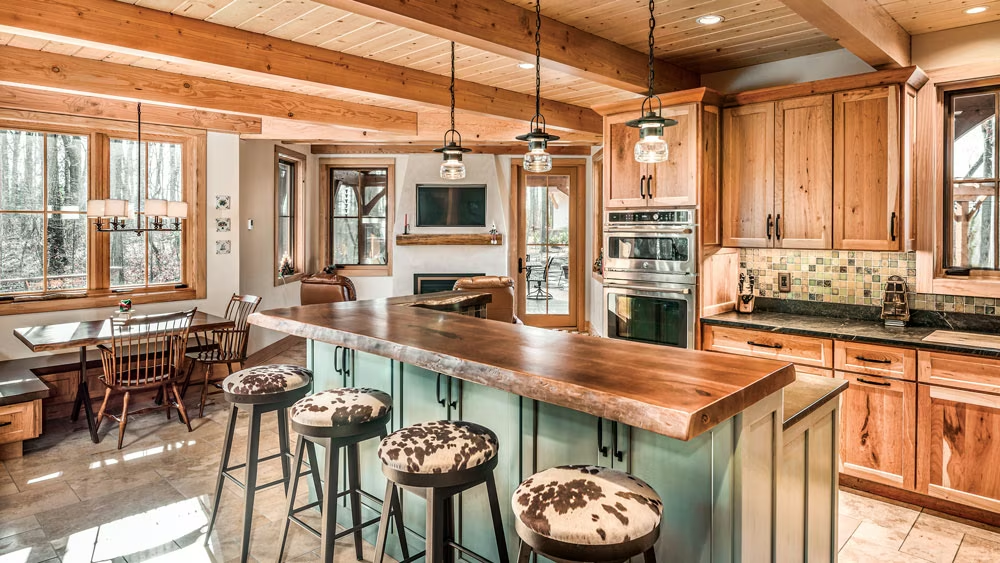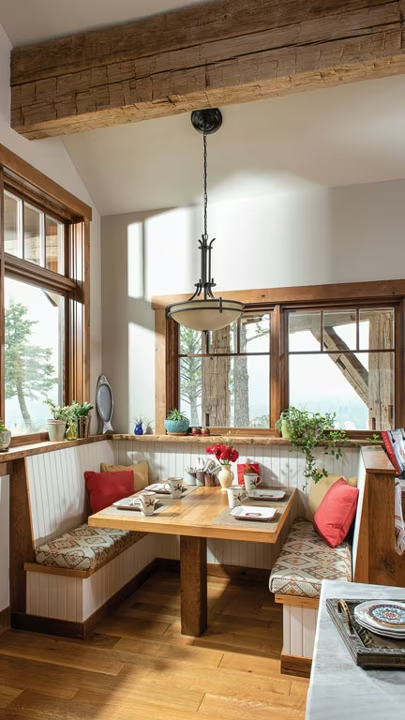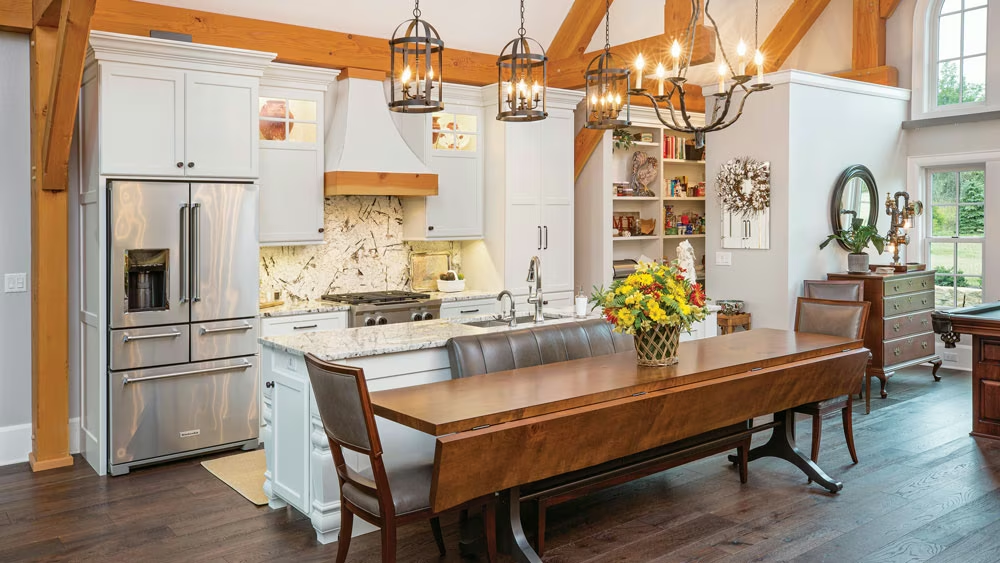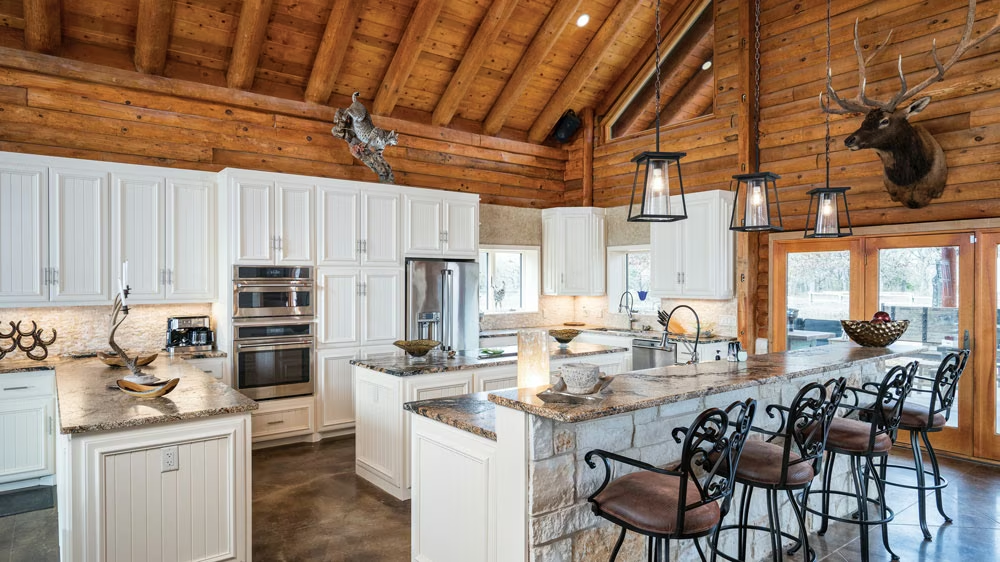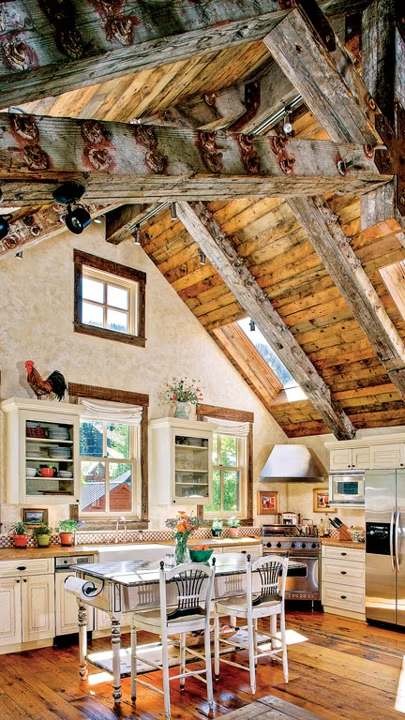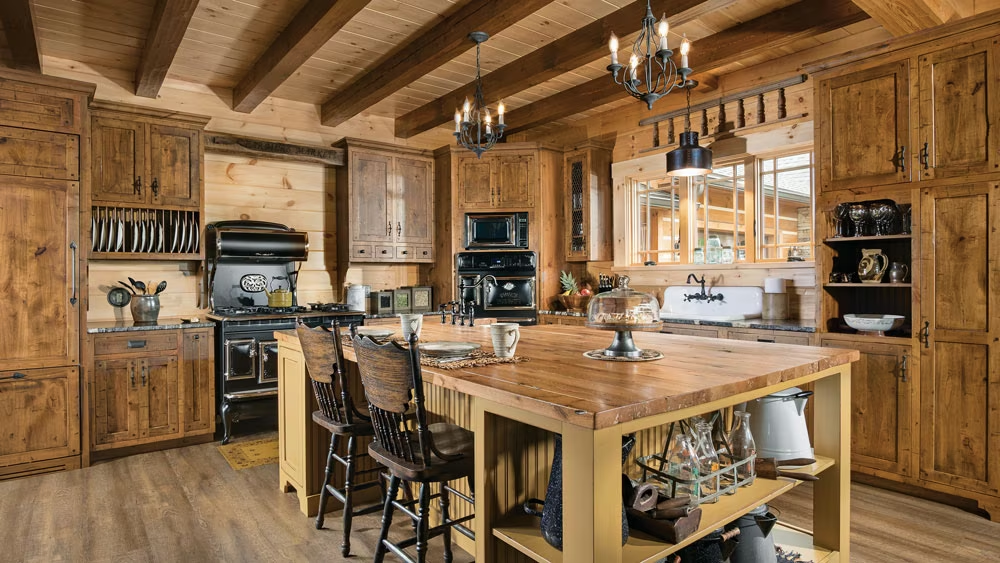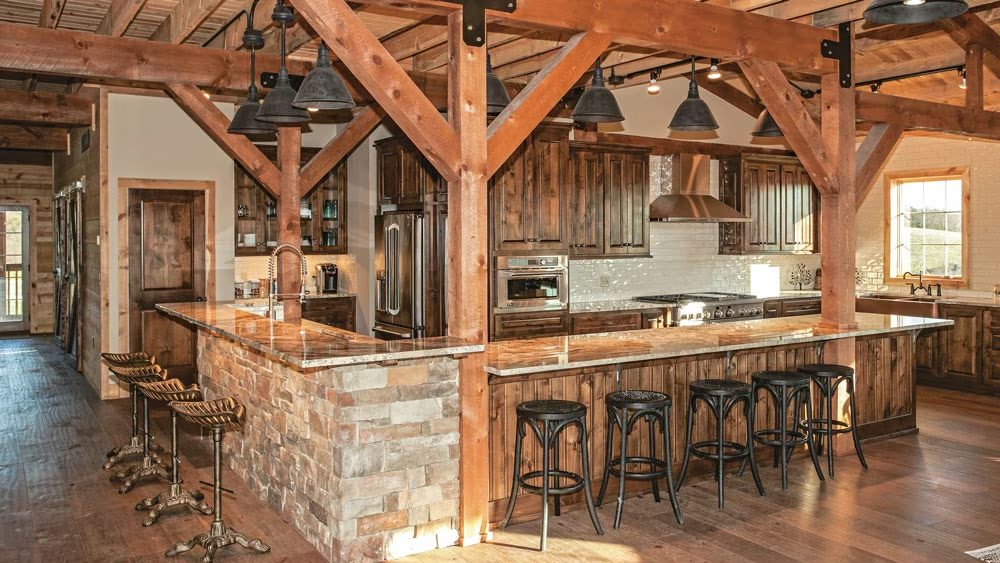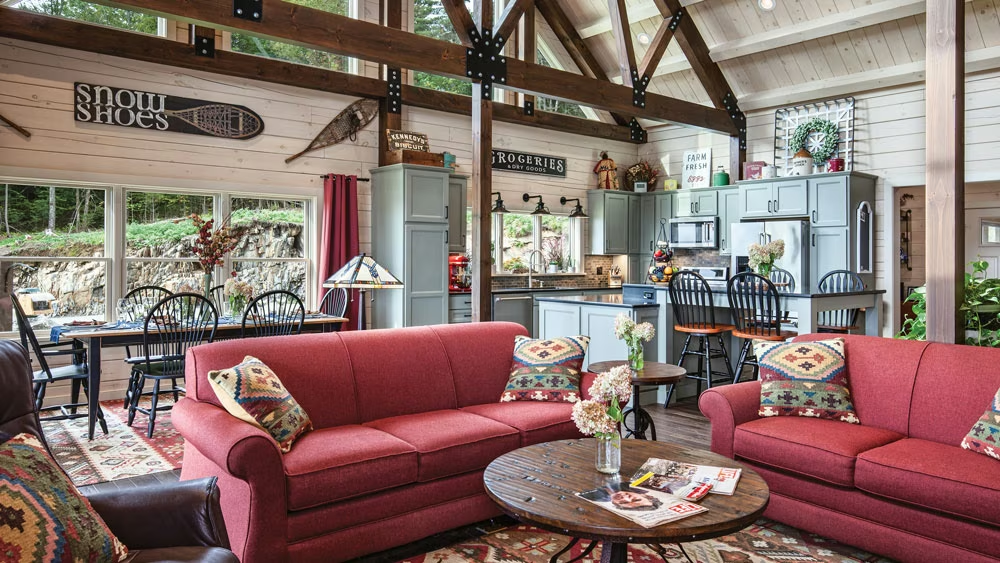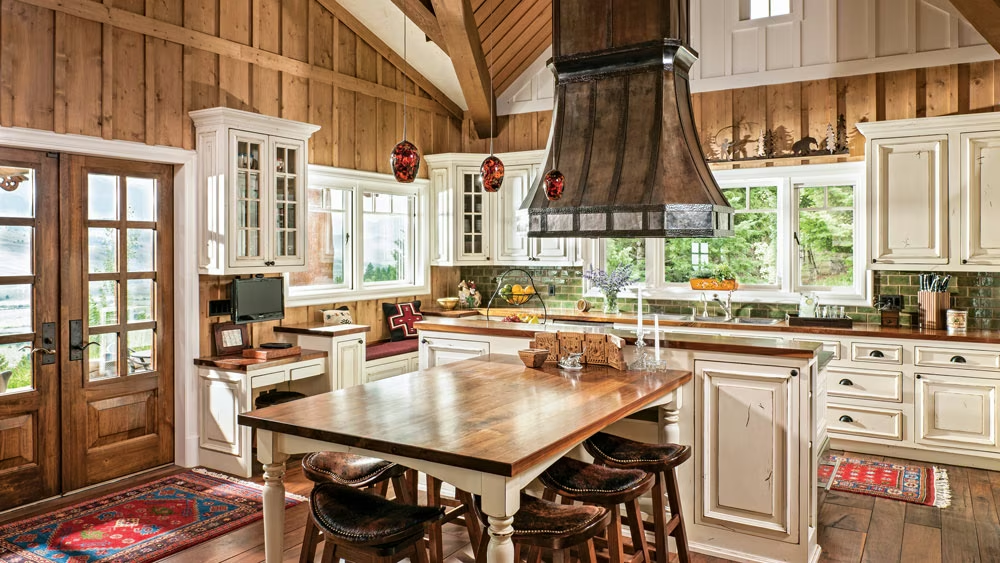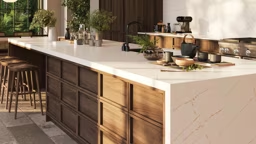Your kitchen is more than a mere place to cook; it’s the nerve center of your home. It’s where topics of the day are discussed, big decisions are made and fun is had. It’s also one of the most expensive spaces in your house. Careful consideration as you’re planning this essential space will guarantee that the ingredients you select will serve their purpose today, tomorrow and for years to come.
Kitchen Configuration
Any successful space starts with thoughtfully planning the design to fit your lifestyle. In a bustling, family-centered home, an open-plan arrangement with an L-shaped, U-shaped or island configuration at its core is the best option. With this type of layout, the family can freely access the kitchen and gather around the island or peninsula, creating togetherness while keeping the clan out of the resident cook’s way.
Seating Essentials
Adding stools at the island, peninsula or table is a no-brainer, but is it enough space? Or, is it the right kind of space. A prominent window is the ideal spot for a seat beneath; corners and bump-outs create the perfect places for banquettes; and a dividing wall offers enough area for a bench. Look to every opportunity your kitchen configuration creates to add seating. Like lighting, you can never have too much.
Butler’s Pantries
Cooking for a crowd calls for a fair amount of stuff. Appliances large and small, pots and pans, utensils and gadgets of all shapes and sizes — not to mention dry goods — all have to be conveniently stashed. Sure, you can install banks of cabinetry, but a butler’s pantry may be a smarter (and perhaps less expensive) option. While this room has its roots in the Victorian era (where actual butlers were commonplace), butler’s pantries are making a comeback, thanks to their ability to keep items organized and out of view. And the less expensive part? You don’t need to spend cash on extra cabinets and counters.
Multiple Islands
An oversized island has been a log and timber home staple for eons, but when that space serves as a prep area (with a sink and/or a cooktop), an eating zone and a sometimes homework/bill-paying station, it can feel cramped in a hurry. Opting for a double-island layout allows you to organize the chaos by designating each island for its specific purpose. Plus, the look it lends to a kitchen is super stylish.
Or … Ditch the Island
Useful versatility is the latest kitchen-design trend, and one way to accomplish is to replace the pricey, cabinetry-based built-in kitchen island with a staple of yore … a kitchen table. This simple, mobile idea gives you the best of both worlds: It provides substantial prep space when you need it and gives you a place to enjoy casual family meals.
Granite Be Gone
What was a kitchen prerequisite in the 1990s and 2000s, granite countertops are a dated feature to avoid in 2022. Quartzite has taken the kitchen design market by storm. There are a variety of reasons for this, but in a family-style kitchen, the big bonus quartzite brings to the table is its durability and easy upkeep. Virtually stain, scorch, chip and germ proof, quartz counters don’t require frequent sealing to keep them looking and performing their best.
Designers are also seeing a resurgence of butcher block or reclaimed wood, especially on islands or as accent countertops. While not nearly as low-maintenance as quartzite, scratches and stains can be sanded out and the surface refinished to keep it looking new.
Varied Countertop Heights
To encourage the entire family, regardless of age, height or physical ability, to help with the cooking, vary the heights of your work surfaces. The standard counter height is 36 inches, but by lowering a section a few inches, not only can a young child or seated adult help mix up a meal, it provides bakers better leverage for kneading dough. If you have exceptionally tall people in your family, increasing the counter height in a section will improve their comfort. Bonus: Adding in this level of accessibility will help your home age gracefully along with you.
Colorful Accents
Why are restaurants often painted red; doctor’s offices, white; or spas, green? Color stimulates the senses, influences perception and impacts mood. So while there will always be a place for white kitchens, when you’re designing a space to encourage your family to linger, consider adding a little pigment into the mix by way of paint, countertop colors, backsplash tile or — if you’re really bold — the cabinetry itself. The latest trend on this front is to incorporate a tri-color cabinetry collection, with uppers being one color; lowers, a contrasting hue; and an accent on the island. The look is fresh and allows you to get the entire family into the decision-making process.
Tons of Texture
Like color, people respond to a tactile environment. So if you do have your heart set on an all-white kitchen, infusing it with texture can accomplish the same result that adding color would. Finishes like shiplap or board-and-batt wall treatments, leathered-stone counters, hammered-metal fixtures, hand-scraped wood or terra cotta tile floors and other additives instill visual interest in a monochromatic space and will inspire the family to hang out here.




